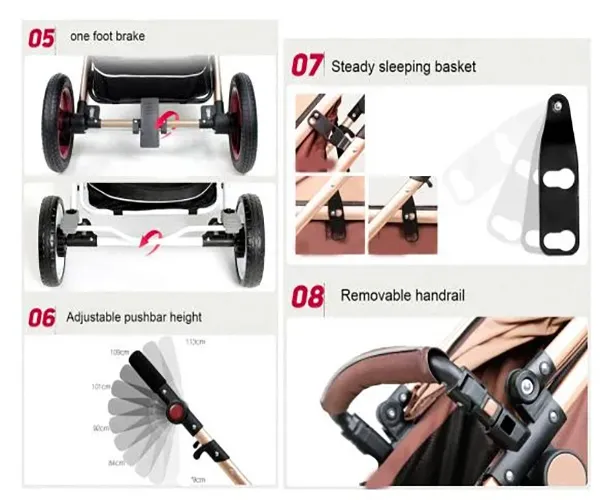10 月 . 11, 2024 00:11 Back to list
Tips for Fine-Tuning Your Mountain Bike Rear Derailleur Adjustment
Adjusting Mountain Bike Rear Derailleur A Comprehensive Guide
The rear derailleur is a crucial component of a mountain bike, responsible for shifting the chain between gears on the cassette. Proper adjustment of the rear derailleur ensures smooth and accurate gear changes, which is essential for optimal performance on various terrains. This guide will walk you through the essential steps to adjust your mountain bike's rear derailleur.
Tools You’ll Need
Before you start, gather the necessary tools a Phillips screwdriver, a 5mm Allen wrench, and, optionally, a bike repair stand to keep your bike stable while you work.
Step 1 Understanding Your Derailleur
Familiarize yourself with the rear derailleur components. The key parts include the cage (which holds the chain), the pulley wheels (which help guide the chain), and adjustment screws for tuning. There are typically two limit screws (denoted as H and L) that define how far the derailleur can move to the left and right.
Step 2 Setting the Limit Screws
1. High Limit Screw (H) This screw controls the movement of the derailleur towards the smallest cog. Shift the chain to the smallest cog and make sure it engages properly. If the chain doesn’t shift easily or overshoots the cog, adjust the H screw clockwise to limit its movement or counterclockwise if it’s too restricted.
2. Low Limit Screw (L) This controls the derailleur's movement towards the largest cog. Shift to the largest cog, ensuring the chain shifts smoothly. If it doesn’t, adjust the L screw similarly—clockwise if the chain is overshooting, and counterclockwise if too tight.
adjusting mountain bike rear derailleur

Step 3 Adjusting the B-Tension Screw
The B-tension screw adjusts the distance between the derailleur's pulley wheels and the cassette. When in the smallest gear, use the 5mm Allen wrench to adjust the B-tension screw so that there is about 5-6 mm space between the top pulley and the teeth of the largest cog. This ensures smooth shifting and prevents the chain from rubbing against the derailleur.
Step 4 Indexing the Gears
With the limit screws set, it’s time to ensure smooth gear indexing. Shift through all the gears while pedaling. If you hear any grinding or the chain doesn’t shift into a cog correctly, fine-tune the derailleur using the barrel adjuster located on the shifter cable. Turning it clockwise will increase tension, while counterclockwise will decrease it.
Step 5 Final Checks
Once adjustments are complete, make sure to test ride the bike to ensure shifts are smooth under load. If any issues arise, repeat the steps as necessary.
Conclusion
Regularly checking and adjusting your mountain bike’s rear derailleur not only prolongs the life of your components but also improves your overall riding experience. With practice, these adjustments can become second nature, ensuring you tackle any trail with confidence. Happy riding!
-
The Main Application Scenarios of Mountain Bike
NewsOct.29,2024
-
Suggestions for Selecting and Maintaining Mountain Bike
NewsOct.29,2024
-
Characteristics of Kids Balance Bike
NewsOct.29,2024
-
Characteristics of Baby Stroller
NewsOct.29,2024
-
Characteristics and Advantages of Mountain Bike
NewsOct.29,2024
-
Baby Stroller Purchasing Suggestions
NewsOct.29,2024
-
Suggestions for Purchasing Kids Balance Bike
NewsOct.09,2024

